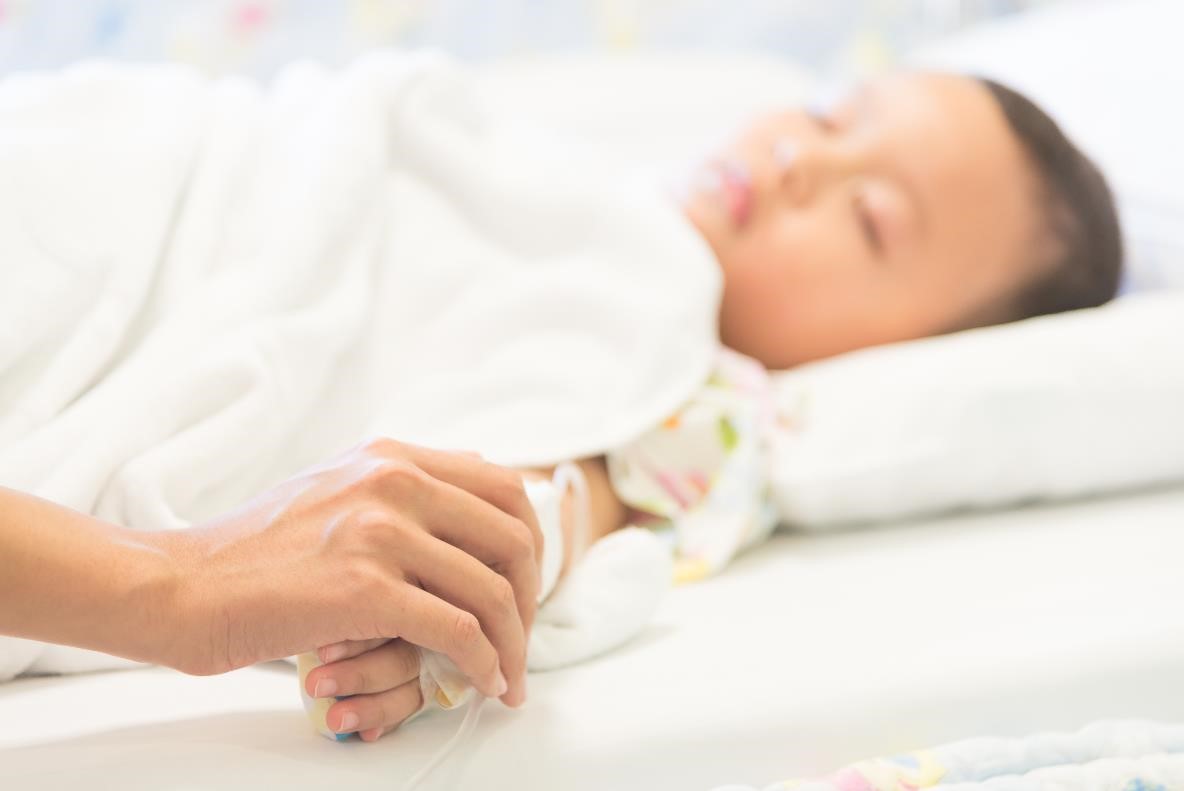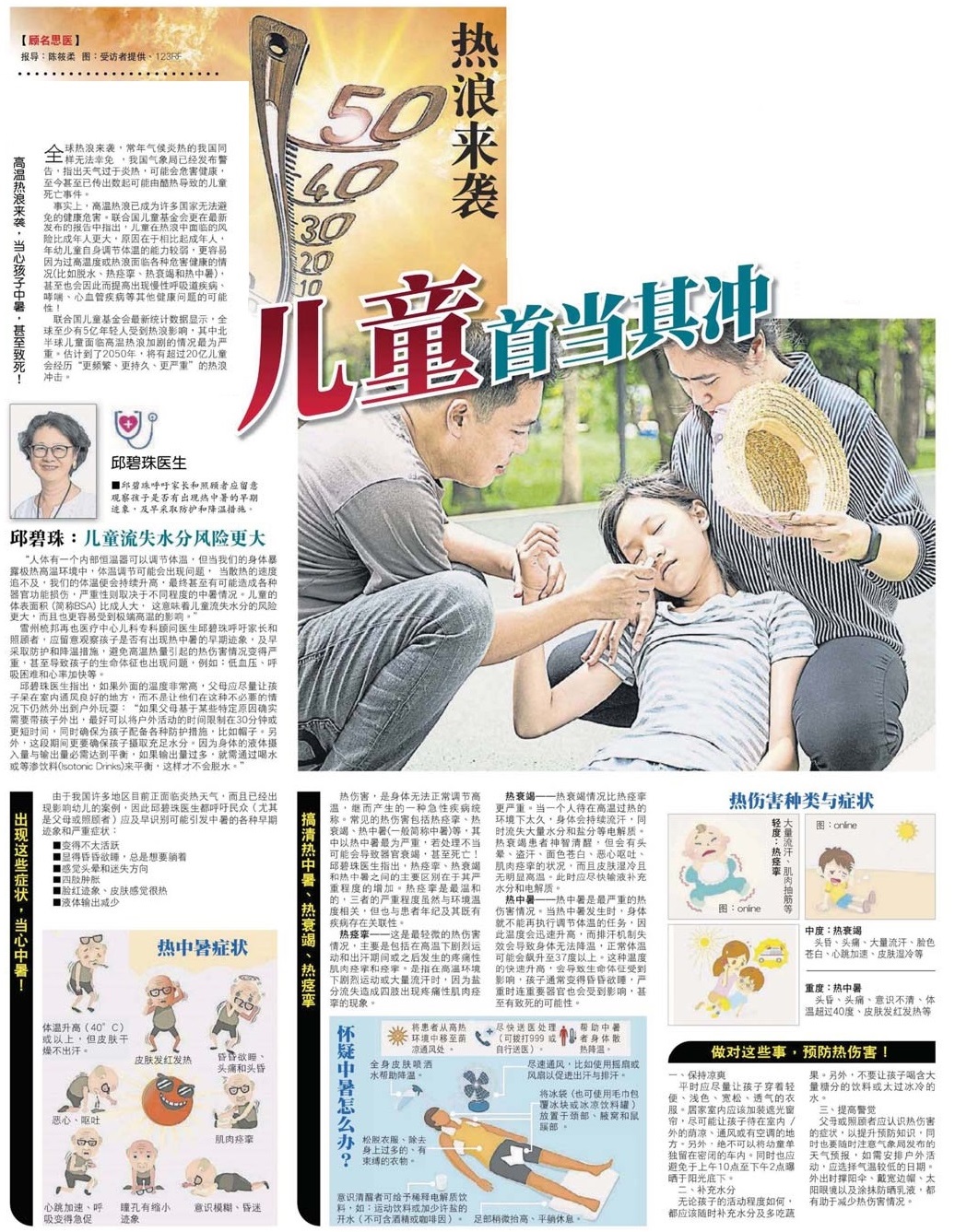
The heatwave has hit many countries globally, and Malaysia despite being hot all-yearlong is not spared from it. The Malaysian Meteorological Department has issued warnings about the health risks from excessive heat, and so far there have been several reported cases of children who have died as a result of the heatwave.
In fact, heatwaves have become an unavoidable health hazard in many countries. In its latest report, the United Nations Children's Fund (UNICEF) states that children are at greater risk in heatwaves compared to adults because young children are less able to regulate their own body temperature and are more likely to be exposed to a variety of health hazards (such as dehydration, heat cramps, heat exhaustion and heat stroke). They are also more likely to develop other health problems such as chronic respiratory illnesses, asthma and cardiovascular disease as a result.
UNICEF’s latest survey indicates that there are at least 500 million young children currently exposed to high heatwave frequency. Children in northern regions will face the most dramatic increases in high severity heatwaves and by 2050, over 2 billion children are forecast to face more frequent heatwaves.

Dr Khoo Phaik Choo, Consultant Paediatrician at Subang Jaya Medical Centre (SJMC) urges parents and guardians to observe early signs so they can take preventive measures.
Dr Khoo Phaik Choo: Children are at greater risk of loss of fluid
Our bodies have an internal thermostat that regulates our body temperature. However, when heat stroke occurs, the body can no longer perform its task of regulating its own temperature. Therefore, the body’s temperature rises rapidly; the sweat mechanism fails, and the body cannot cool down. This may lead to organ disfunction depending on the severity of the heatstroke. Children have a larger body surface area (BSA) than adults do. This means children are at greater risk of loss of heat and fluid and can be more affected by extreme heat.
Subang Jaya Medical Centre (SJMC)’s Consultant Paediatrician Dr Khoo Phaik Choo urges parents and guardians to observe early signs so that they can take preventive measures and avoid the heatstroke from becoming severe - where the child might experience issues with their vital signs like a low blood pressure, laboured breathing and a rapid heart rate.
Dr Khoo Phaik Choo adds, if the temperature outside is extremely hot, parents should try to keep children indoors in well-ventilated areas rather than expose them unnecessarily to outdoor play. “If parents do need to bring children out for some specific reason, then limit the timing to about 30 mins or less for some kind of outdoor activity, and make sure the child has some form of protective shade like a hat. During this time, ensure your child is well-hydrated because our body’s fluid intake must balance the output. If the output is excessive especially during heat exhaustion, we need to balance it out by drinking water or isotonic drinks so we do not get dehydrated.”
If these symptoms appear, you might have a heatstroke
As many parts of the country are currently experiencing heatwave and reported cases of heatwave affecting young children, Dr Khoo Phaik Choo urges the public (especially parents or guardians) to identify early signs of a possible heatstroke:
- Becoming less active
- Appears lethargic and wanting to lie down all the time
- Feeling dizzy and disorientated
- Experiences swelling of the limbs
- Signs of flushing, skin feels hot
- Decreased fluid output
Differences between heat cramps, heat exhaustion, heat stroke
Heat injury is a collective term for an acute illness that occurs when the body is unable to properly regulate high levels of heat. Common heat injuries include heat cramps, heat exhaustion and heat stroke, of which heat stroke is the most serious and can lead to organ failure and even death if not treated properly.
According to Dr Khoo Phaik Choo, the main difference between heat cramps, heat exhaustion and heat stroke are its increasing degrees of severity, with heat cramps being the mildest. While the severity of all three is related to the level of heat exposure, it may also relate to the patient’s age and any pre-existing illnesses.
Heat cramps – The mildest form of heat injury. Consists of painful muscle cramps and spasms that occur during or after intense exercise and sweating in high heat. This means that doing intense exercise and sweating a lot under high heat will result in a loss of salt from the body that causes muscle cramps.
Heat exhaustion – Heat exhaustion is more severe than heat cramps. When a person is under the heat for too long, they will sweat profusely, and they will lose a large amount of water, salt and electrolytes. The patient is usually alert, but may experience dizziness, night sweats, look pale, have nausea, vomiting, and muscle cramps. Their skin will also feel cold and clammy, not hot. This is when they need to replenish their fluids and electrolytes as soon as possible.
Heat stroke – Heat stroke is the most serious form of heat injury. When heat stroke occurs, the body can no longer perform its task of regulating its body temperature. Therefore, the body’s temperature rises rapidly; the sweat mechanism fails, and the body cannot cool down. This rapid rise in temperature can lead to an impairment of vital signs, with the child often becoming lethargic and, in severe cases, even vital organs can be affected, with the possibility of death.
What should one do in case of heat stroke?
- Spray water all over the skin to help cool down.
- Remove or loosen any excess or tight clothing.
- Circulate some air using a fan to help the person sweat it out.
- Place ice packs (or towels wrapped with ice or cold drinks) on the neck, armpits, and groin area.
- Raise the legs and lie the person flat on their back.
- If the person is conscious, have them drink some fluids with electrolytes, for example sports drinks or plain water with some salt (should not contain any alcohol or caffeine).
Follow these steps to prevent heat stroke
Keep Cool
- Let your children wear thin, light coloured, loose and breathable clothing. Install curtains that block out the sun, allow your children to stay in a cool, well ventilated or air conditioned place. Also, do not leave your child alone in an enclosed car. Avoid going out into the sun from 10am – 2pm.
Stay Hydrated
- Keep your child well hydrated throughout the day and get them to eat more fruits and vegetables. Also, avoid giving your child sugary drinks or water that is too cold.
Be Alert
- Parents or guardians should be aware of the symptoms of heat injury so that they know how to prevent it. They should also keep track of the weather report by the Malaysian Meteorological Department, so that if they need to plan for any outdoor activities, they can choose days which are less hot. When going outdoors, do bring an umbrella, wear a hat, shades and also put on sunscreen, which can help reduce the risk of heat injuries.

Source
China Press
